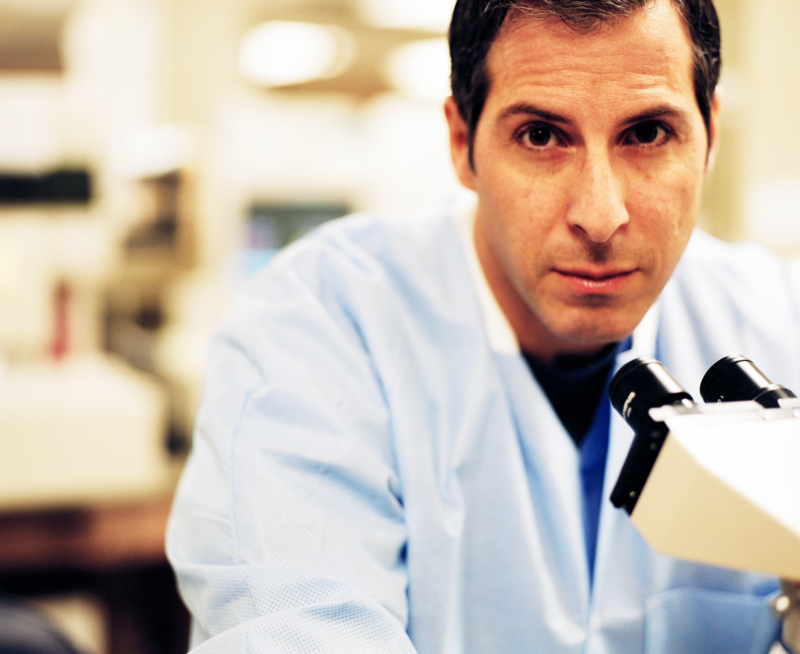
WEDNESDAY, Feb. 3 (HealthDay News) — Some patients thought to be in a vegetative state actually show signs of consciousness when assessed with a brain scan.
A team of British and Belgian neuroscientists conducted functional magnetic resonance imaging (fMRI) on 54 patients who were diagnosed as being in a vegetative or a minimally conscious state because of traumatic brain injury, brain stem stroke, meningitis or other brain injury.
When the patients were asked to think about hitting a tennis ball or walking around their home or neighborhood, brain scans for five of them showed they could “willfully modulate their brain activity,” or show evidence of conscious thought, said lead study author Martin Monti, a neuroscientist at the Medical Research Council Cognition and Brain Sciences Unit in Cambridge, England.
Researchers could tell the brain activity was conscious thought because the patients’ brain activity was similar to that of healthy controls performing the same mental tasks, according to the study in the Feb. 2 issue of the New England Journal of Medicine.
Additional tests found three patients could follow commands or make small movements that further showed some level of awareness. Two had been considered vegetative and one minimally conscious.
In the other two, however, researchers could not find any discernible evidence that they could respond.
As a result of the testing, four patients originally diagnosed as being in a vegetative state were reclassified as being minimally conscious.
“There is no ‘consciousness meter’ we can put next to the brain and say if someone is conscious. We can only look at how people behave and infer if they are conscious or not,” Monti said. “The problem is behavior is not always a good measure of consciousness. fMRI seems to be one way of determining if a patient who is not responsive behaviorally is, in fact, conscious.”
Patients in a vegetative state appear to awaken after a coma but show no signs of awareness of self or their environment. Though their eyes are open, they have no purposeful actions, explained Dr. Allan Ropper, a neurologist at Brigham and Women’s Hospital in Boston, who wrote an accompanying editorial. Their behavior is limited to reflexive behaviors, such as roving eye movements, swallowing or yawning.
The minimally conscious state is a newer term that describes patients with very limited and erratic verbal or motor responses to a spoken voice or other external stimuli.
The research raises provocative questions about the nature of consciousness and self-awareness, Ropper said.
Even if brain scans show hints of residual consciousness, “the question is, what does it mean? That is what people are going to have to grapple with,” Ropper said. “It has to do with what you think life is and what is a meaningful life. Those are social, cultural and theological questions.”
Ropper also cautioned against families gleaning a false sense of hope. Evidence of consciousness was found in only a small percentage of patients. And all of those were patients who had suffered traumatic brain injury, not “anoxic” brain injury caused by a lack of oxygen from, say, cardiac arrest.
The ultimate hope is that brain scans could one day enable some level of communication, said Dr. Joseph Fins, a professor of medicine and public health and chief of the division of medical ethics at Weill Cornell Medical College in New York City.
“Restoring communication is the holy grail,” Fins said. “The thing that families overwhelmingly want is for their loved one to be able to express their wishes, and to know that their loved one is not in pain. These are things that could profoundly impact the decisions of families found in the difficult situation of caring for someone who is vegetative or minimally consciousness.”
In the study, the patient who came closest to that was a man in his 20s who had suffered traumatic brain injury at least five years earlier in a traffic accident, Monti said. His brain scan showed he was able to correctly answer questions such as, “Is your father’s name Alexander?” though he could not verbalize or show through any movement that he could respond.
“We tried very hard to communicate at the bedside, but that remained impossible,” Monti said. “But it is still the case that we managed to give him, to a little extent, a voice. In a sense there was a very positive outcome. We managed to interact. This is an extremely exciting thing.”
In some ways, the research raises many more questions than it answers, Monti added.
“The human brain, even though we are learning more and more about it, is extremely mysterious to us in many ways,” Monti said. “We are still struggling to understand the meaning of what it means to be conscious or to have streams of thought or self- awareness.”
More information
The U.S. National Institute of Neurological Disorders and Stroke has more on traumatic brain injuries.

